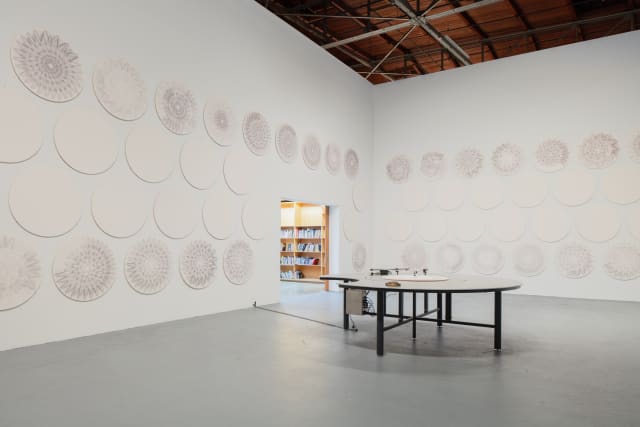Olafur Eliasson’s drawing machines enlist elements of chance to make marks in ink, paint, or coloured pencil on circular sheets of paper or canvas. He began experimenting with automatic drawing in the late nineteen-nineties together with his father, Elias Hjörleifsson, who was an artist as well as a cook on a fishing boat. For this new drawing machine, a circular sheet of paper, mounted to a round table, revolves slowly. A stylus held above the paper by two levers is also in constant, yet slow, motion as it marks the paper. Meteorological data are used to control the speeds of the four motors that drive the machine, causing the movements of the levers and the traces that are left on the page to reflect the intermittences of the weather. The density of the marks is determined by the amount of solar radiation detected at the time of drawing. The pattern appears thicker when it is sunny and thinner when there is cloud cover. The frequency of the wavelengths reflects the difference between the current temperature and that of the same calendar day fifty years ago. The drawings are individual registrations of a particular moment in time. A different drawing is produced each day and hung on the surrounding walls, so that the display changes over the course of the exhibition. While the resulting compositions look as though they could potentially be deciphered, the data are used not to convey information for scientific purposes but rather as unpredictable, more-than-human collaborators.



